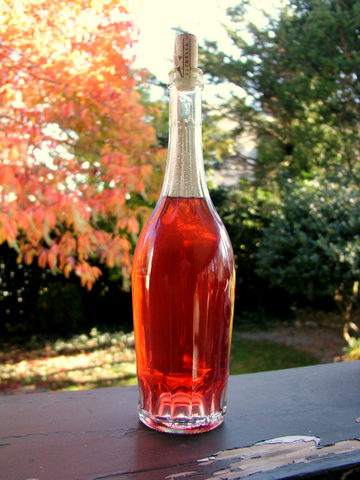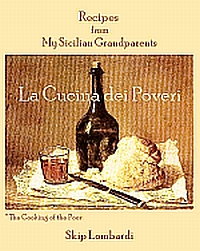White Zinfandel Vinegar
May 7th, 2007We had a shop open in downtown Mystic this past summer that, on the surface, seemed a sure hit. A local fellow thought he’d have a go at selling olive oils and vinegars. Of course, I thought this was a great idea too. I had visions of a shop like Alziari in Vieux Nice, where patrons bring their own bottles, and draw off as much olive oil as they need from one of Alziari’s massive vats. Or they bring their own containers and scoop out pounds of Piccholine, Calamata, and Sicilian Colossal olives.
Alas, our young fellow had a different strategy in mind. His turns out to be the kind of shop where Aunt Martha might go to buy a stocking-stuffer for cousin Sally who’s running around with that young Italian fellow. That is to say, a 4 oz. Bottle of olive oil of indeterminate origin that costs around $25.00.
Nevertheless, our local fellow was enthusiastic about his products, and was delighted to organize tastings on the spur of the moment. The day I visited his shop he had several bottles of vinegar on offer; among them, a bottle of White Zinfandel.
I tasted; it was fruity yet acidic; full-bodied yet mellow. I could talk about hints of blackberry, tobacco, and apricots, but the only time I’ve gotten those hints was when I tasted blackberry, tobacco, or apricots. The White Zinfandel was lovely. But at $25.00 for 750 ml. I thought I could do better.
I’ve made my own vinegar in the past. In fact, when I stayed on a vineyard in Piemonte, my host and hostess sent me home with a parting gift of Barolo mother, or vinegar starter. When I got home, I simply found a clean container, added the mother, and poured in bottle of Gallo Hearty Burgundy. Six or eight weeks later, I had some delicious red wine vinegar.
How I Did it This Time

This time, I didn’t have a mother, so I went to a health food store, and bought a quart of unpasteurized, unfiltered cider vinegar. This—I’ve been told—would do the job of turning wine into vinegar. Next, I went to my local liquor mart for a liter of Sutter Home White Zinfandel wine. Finally, I prevailed on a chef friend for an empty glass one-gallon pickle jug, and the use of her Hobart commercial dishwasher.
If you don’t have a chef friend and can’t wash your container at 192 degrees Fahrenheit, scrub your container with detergent, then rinse with a solution of one-tablespoon chlorine bleach to one gallon of water, then rinse again with warm tap water. The whole idea here is that any bugs that show up in the vinegar—and they will—should be yours, and not the previous occupant’s.
To start the process, combine the cider vinegar and the wine in a one gallon container; cover the top with a cloth, like a piece of old bed sheet. Secure the cloth with an elastic band, then store the mixture in a warm dark place. After approximately two weeks, the liquid will appear cloudy, with some milky solids forming at the bottom of the jar. This is the beginning of the mother. After approximately four weeks, the mixture should taste more like vinegar than wine. After approximately six weeks, you should have nearly one and one half liters of vinegar.
When this happened for me, I drew off approximately half of what I had, and replaced it with an equal part of Sutter Home White Zinfandel. The vinegar in the photograph represents the second round of fermentation.
At this point, I’m switching to Champagne vinegar; my friend whom I’ll call Fatima, had a bottle of indifferent German sparkling wine called Trocken that seems like a good candidate.
I’ll get back to you about this effort in about six weeks.
[ad#bottom]



